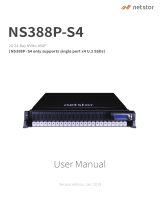
Enter the PERC 11 HII configuration utility................................................................................................................. 58
Exit the PERC 11 HII configuration utility.................................................................................................................... 58
Navigate to Dell PERC 11 configuration utility........................................................................................................... 59
View the HII Configuration utility dashboard..............................................................................................................59
Configuration management............................................................................................................................................ 60
Auto Configure RAID 0...............................................................................................................................................60
Create virtual disks..................................................................................................................................................... 60
Create profile based virtual disk............................................................................................................................... 61
View disk group properties........................................................................................................................................62
Convert to Non–RAID disk........................................................................................................................................62
Delete configurations................................................................................................................................................. 62
Controller management................................................................................................................................................... 62
Clear controller events...............................................................................................................................................62
Save controller events............................................................................................................................................... 63
Save debug log.............................................................................................................................................................63
Enable security.............................................................................................................................................................63
Disable security............................................................................................................................................................ 63
Change security settings...........................................................................................................................................64
Restore factory default settings..............................................................................................................................64
Auto configure behavior............................................................................................................................................ 64
Manage controller profile.......................................................................................................................................... 64
Advanced controller properties................................................................................................................................65
Virtual disk management................................................................................................................................................. 68
Virtual disk numbering................................................................................................................................................ 68
Configure Virtual Disks...............................................................................................................................................70
Perform expand virtual disk operation................................................................................................................... 70
Perform consistency check.......................................................................................................................................70
Physical disk management............................................................................................................................................... 71
View physical disk properties.....................................................................................................................................71
Cryptographic erase....................................................................................................................................................72
Physical disk erase.......................................................................................................................................................72
Assigning a global hot spare......................................................................................................................................73
Assigning a dedicated hot spare.............................................................................................................................. 73
Convert to Non–RAID disk........................................................................................................................................74
Hardware components..................................................................................................................................................... 74
View battery properties............................................................................................................................................. 74
View physical disks associated with an enclosure............................................................................................... 75
Security key management in HII configuration utility............................................................................................... 75
Chapter 8: Security key and RAID management........................................................................... 77
Security key implementation...........................................................................................................................................77
Local Key Management.................................................................................................................................................... 77
Create a security key........................................................................................................................................................ 77
Change Security Settings................................................................................................................................................78
Disable security key.......................................................................................................................................................... 78
Create a secured virtual disk.......................................................................................................................................... 79
Secure a non-RAID disk................................................................................................................................................... 79
Secure a pre-existing virtual disk.................................................................................................................................. 79
Import a secured non-RAID disk.................................................................................................................................... 79
Import a secured virtual disk.......................................................................................................................................... 80
Contents 5




















